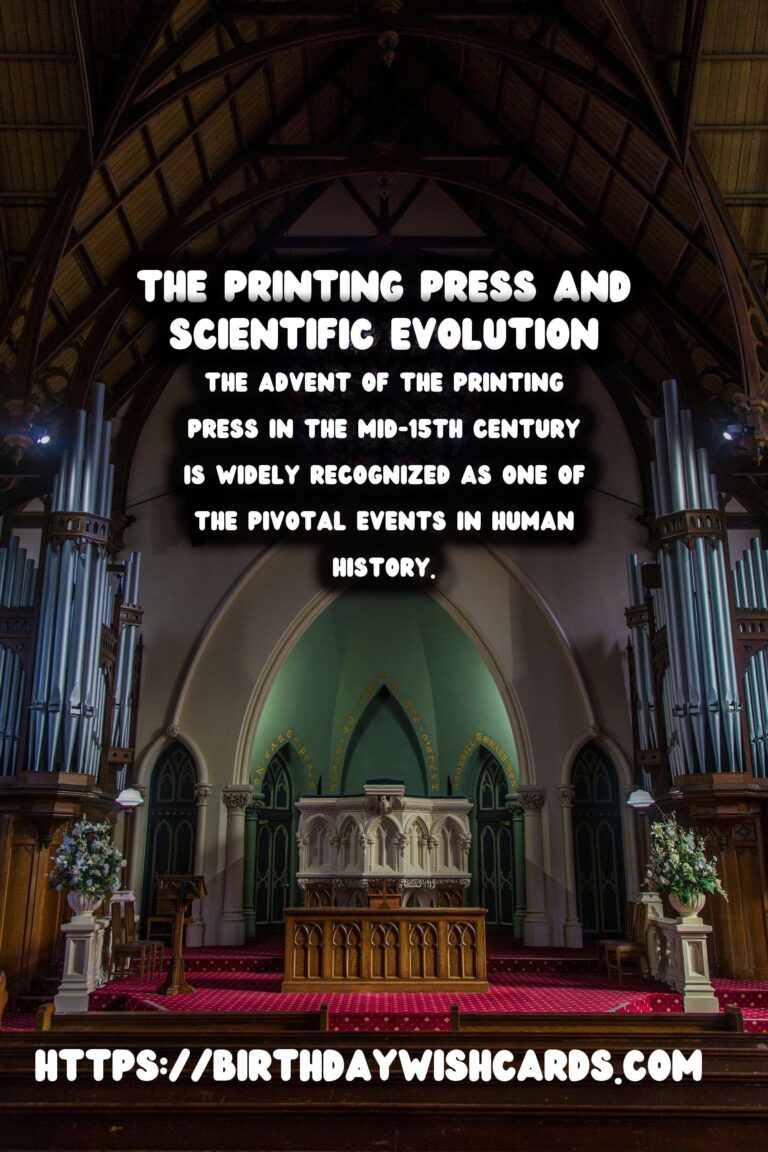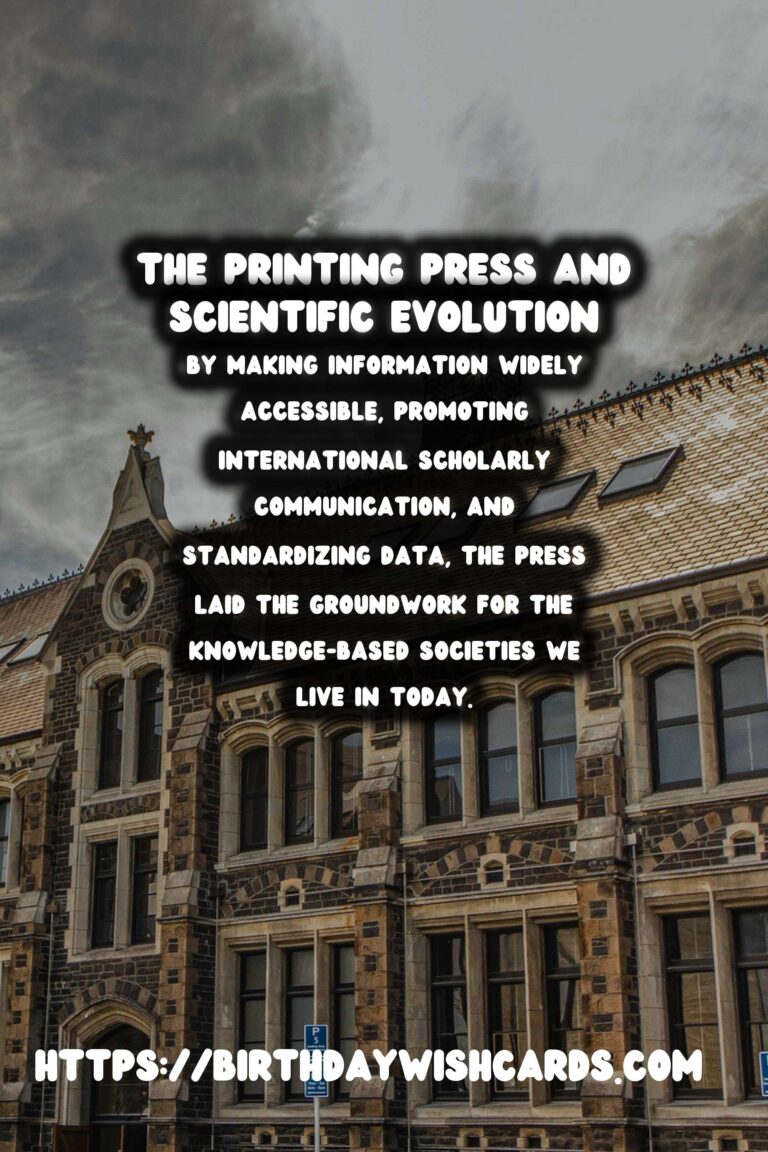
The advent of the printing press in the mid-15th century is widely recognized as one of the pivotal events in human history, leading directly to the widespread dissemination of knowledge and information. Its impacts were profound, especially during the Scientific Revolution, a period marked by significant scientific exploration and understanding.
The Beginnings of Printing
Before the invention of the printing press, books were laboriously hand-copied, often by monks, which limited access to information largely to the elite. Johannes Gutenberg’s introduction of the movable type printing press around 1440 revolutionized this process. By enabling the mass production of books, Gutenberg’s invention democratized knowledge, laying vital groundwork for the Renaissance and later, the Scientific Revolution.
Role of Printing in the Scientific Revolution
The Scientific Revolution, spanning from the 16th to the 18th centuries, was characterized by groundbreaking developments in fields such as physics, astronomy, biology, and chemistry. The printing press played a crucial role in this era, allowing new scientific ideas to spread rapidly across Europe.
One of the most significant outcomes was the increase in accessibility to scientific texts. Works by Galileo, Copernicus, and Newton became widely available, thereby reaching an international audience. This accessibility propelled shifts in thinking, away from traditional dogmas to verifiable scientific observations and theories.
Impact on Collaboration and Communication
The printing press also enhanced communication among scientists. With the ability to print journals and newsletters, scientists could share their discoveries and methodologies with peers. This exchange was instrumental in fostering a collaborative scientific community, which collectively pushed boundaries of knowledge further and faster than any single researcher could alone.
Printing and Standardization of Knowledge
Another important impact of printing was the standardization of knowledge. Before the printing press, variations in handwritten manuscripts led to inconsistencies in information. Printing ensured that scientific data, methodologies, and conclusions could be replicated accurately, paving the way for the rigorous verification processes that are central to modern science.
Conclusion: A Legacy of Knowledge Dissemination
In summary, the printing press was not merely a new technology; it was an engine of transformation that accelerated the Scientific Revolution, reshaping our world. By making information widely accessible, promoting international scholarly communication, and standardizing data, the press laid the groundwork for the knowledge-based societies we live in today. The legacy of Gutenberg’s invention continues to influence every corner of modern life, from the internet to digital printing technologies.
The advent of the printing press in the mid-15th century is widely recognized as one of the pivotal events in human history. By making information widely accessible, promoting international scholarly communication, and standardizing data, the press laid the groundwork for the knowledge-based societies we live in today.
#HistoryOfPrinting #ScientificRevolution

